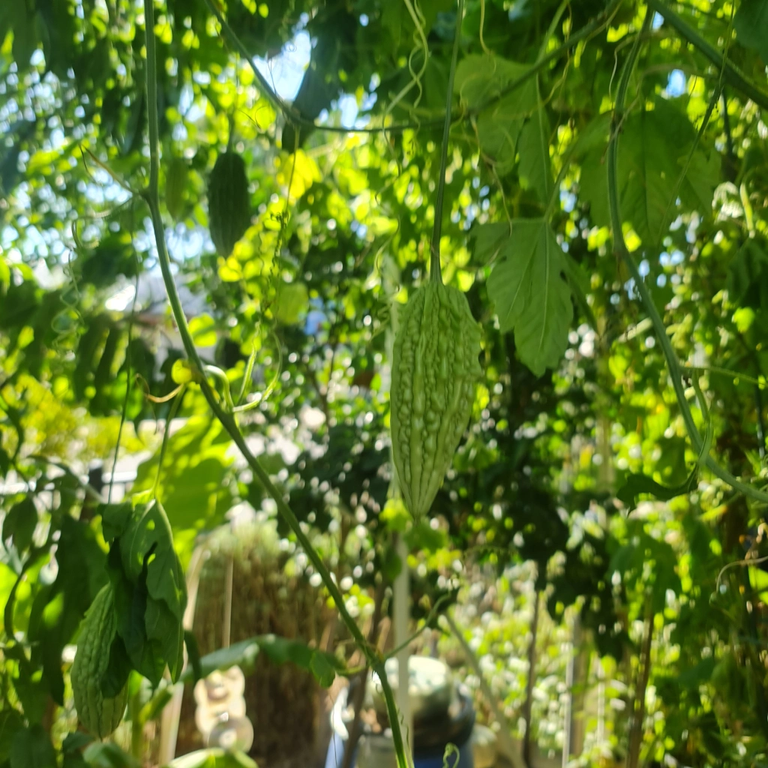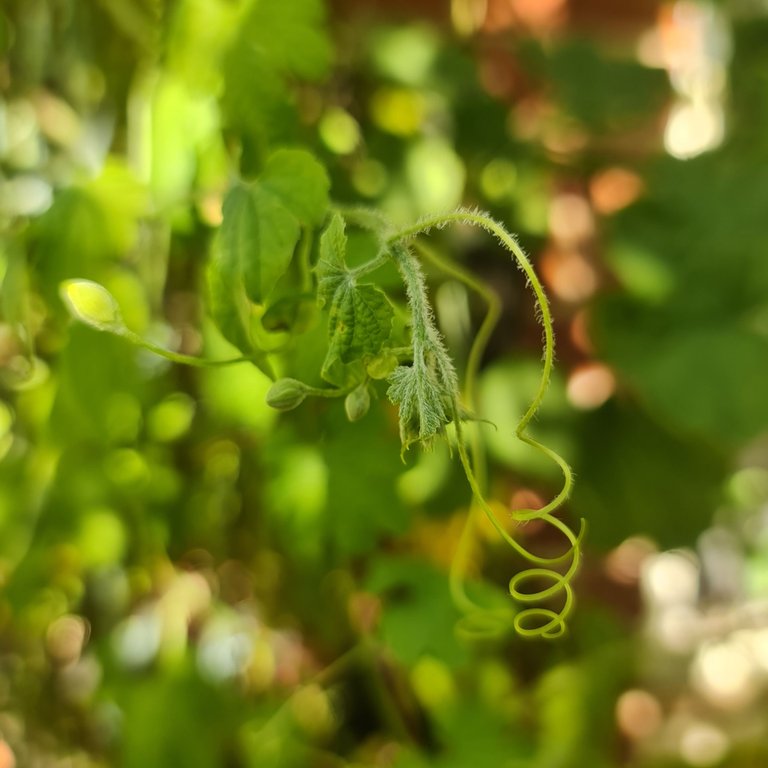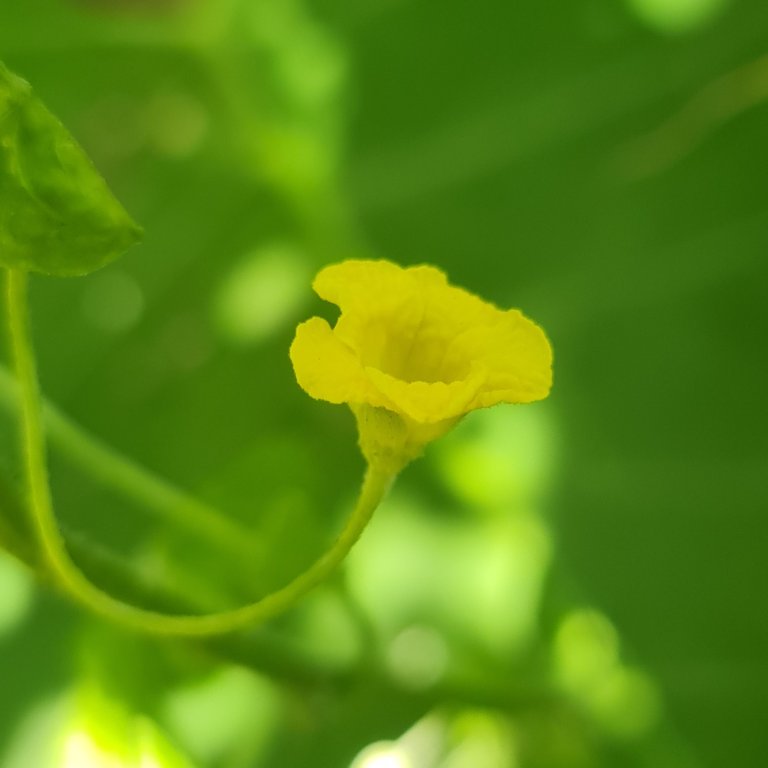A little about the uses of AMPALAYA or BITTER MELON (MOMORDICA CHARANTIA)

Common names: Bitter Melon, Bitter Gourd, Ampalaya, Alligator Pear
Taxonomic name: Momordica charantia
Family: Cucurbitaceae
Related Herbs: Melons, Squash
Area of origin: Africa
Parts used: Fruit, leaves, tendrils
Can be used for: cancer, diabetes, fever, HIV and AIDS, infections, psoriasis
Healing constituents: Quinine, charantin, polypeptide-P, protease inhibitors, calcium, magnesium, potassium, iron and zinc, Vitamins C and A, fibre, folate (B9)
Warnings: Bitter Melon has been used as an abortifacient, so avoid it if you’re pregnant. Heavy use can cause gastric upset.
Description
Here at Ligaya Garden, we call Bitter Melon buy its Filipino name of Ampalaya’. It is a quick growing, dense vine that we use as strategic shade around the garden. It loves to climb, so keeping it up on a trellis is a wonderful way to increase your gardening space by taking advantage of the fact that the fruit like to hang.
Amplaya is one of the Melon family, (Cucurbitaceae) and there are two varieties – The Chinese variety which is long, green, and covered with wart-like bumps on the rind. Plants can also put out a very pale green, almost white fruit. The Indian variety is longer and has more pointed ends. This variety has more jagged (though not sharp) spikes rather than the bumps of the Chinese variety. In both cases, it seem best to use the fruit before maturity.
The seeds of Ampalaya have a red, sweet gel around them that can be removed in your mouth.

Taste and Energetics
bitter and pungent
Tissue states
tension, cold depression
Medicinal use
The bitterness that gives Bitter Melon its name is the key to the herbal use of it in digestive and metabolic issues. Ampalaya is such a potent stimulant to our central nervous and immune systems that, in the Philippines, traditional midwives place an Ampalaya leaf in the mouth of new-borns to kick off a strong immune system.
Ampalaya also supports our body in general, by being full of mineral nutrients, vitamins A and C and having a high level of fibre. It also contains folate (vitamin B9) which helps in the formation of red blood cells. Ampalaya is truly a boost to our immune system!
Water-soluble extracts of bitter melon have led to significant decreases in levels of the LDL (bad) form of cholesterol in patients. The key to this must be the bitterness moving the liver and gall bladder to work better or harder. They are the key organs that work with fats and oils and can, along with the high fibre content, contribute to the laxative properties of Ampalaya.
In TCM, Bitter Melon seeds can be dried and roasted, ground and used as a tonic for fatigue and sexual dysfunction, which are linked in so many ways in most schools of herbalism.
The plant juice seems to be the most powerful way to take Ampalaya for medicinal reasons. Test with powdered extracts proved ineffective in some clinical trials.
The juice of Bitter Melon is used in many traditions where it is applied directly to the skin to relieve soreness and redness and is particularly effective in reducing the severity of eruptions of psoriasis. It contains a compound that improves the turnover rate of the production of new cells (by inhibiting the enzyme guanylate cyclase if you want to get technical). If you’ve spent a little time on this site, at my workshops and herbalism in general, you will be well aware of the relationship between digestion and elimination (especially the liver) and skin conditions.

Amazing Ampalaya has also been successfully tested as a possible treatment for some cancers, particularly the stomach, colon, lung, and upper respiratory tract.
The most famous use of Ampalaya in its use in cases of diabetes, especially Type 2. Bitter Melon affects the metabolism of sugar and its uptake by cells in several ways, making it a multi-pronged tool in herbal treatment of this disorder.
Bitter melon works in many ways to aid diabetics. first, it reduces the response of the nervous system to sweet tastes. It has been found to reduce after meal glucose levels in the blood. It improves the way that sugar is used by cells and can facilitate greater uptake by them because the active compound, charantin keeps sugar in solution in blood longer, helps cells pick up sugar, sensitizes them to its sweet taste . You may have noted in a previous sentence that Ampalaya reduces the central nervous system’s response to sweet tastes but here, we see that it improves the cell’s response to it. Multi-layered healing indeed!
It can improve insulin tolerance without increasing insulin levels in type 2 diabetics. Ampalaya can stimulate the pancreatic cells that make insulin but it also has its own version of the compound – a chemical named ‘polypeptide-P’ which can also help regulate blood sugar in diabetics.

How we use Bitter Melon at Ligaya Garden
We use Ampalaya in many ways at our place. Jelina cooks it for use as a vegetable in meals. The bitter taste can be almost removed by covering pieces in salt, in the same way one does with Eggplants. Though, as the bitterness is the main taste characteristic, I wouldn’t do too much of this. As with other melons, the tendrils, vine tips and flowers can be cooked as vegetables.
We also juice the fruit and leaves, make an herbal juice (succus) for later use. The seeds can be dried, roasted and ground for another remedy. You can slice and dry the fruit for later use as well, though drying drastically reduces the bitterness.
I make a tincture from the leaves for use later in the year. A high level of alcohol (60%+) extracts a bitter, oily substance that makes a foul tasting tincture that we have used to quickly drop the blood sugar levels and symptoms in family who have type 2 diabetes. This year, I’m trying macerating the ripe fruit in rubbing alcohol in order to try it out as a muscle relaxant – another reported benefit of Ampalaya.






My favorite way to enjoy it is by frying it with eggs, tomatoes, and plenty of onions.
There are so manty ways that Jelina cooks it...very versatile.
Oh, it is a good thing that I saw this blog of yours, it reminds me of my plan to plant my ampalaya. Also because of this blog of yours, I learn more about ampalaya.
No problems! Glad to help...
There are many other plant posts dotted around my blog. Don't forget to check out our website https://ligayagarden.online too!
Oh, yes, I will, thank you.
So much interesting information here. You really took time to set up this article in a beautiful and informative way -- so appreciated!!
Thank you. It's my new format for plant posts. Glad you liked it!
Damn, that's a lot of valuable use cases. Appreciate you sharing.
No worries @mattclarke! It's an amazing plant!